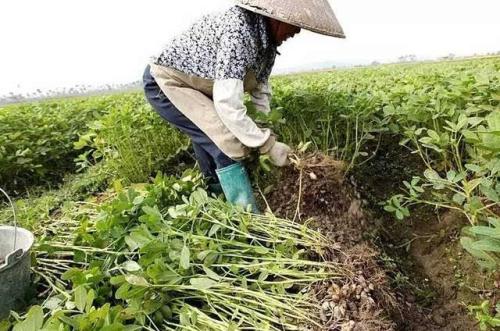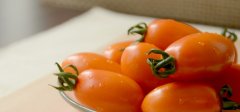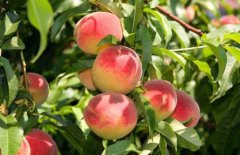Introduction of New Peanut varieties in Japan Variety characteristics and cultivation points of Chiba P114 and Chiba P114
Do you know what kinds of peanuts there are? Peanut planting method is relatively simple, generally will be planted. Do you know the variety of peanuts from Japan? Let's take a look at the variety of Chiba P114. This variety is a new one registered in 2015 and is scheduled to go on sale in 2020. Here, we will introduce the variety characteristics and cultivation points of "Chiye P114".
1. Main features
The main results are as follows: (1) the sucrose content of grain is higher than that of "Nacate Yutaka" and has a sweet taste, and the taste of roasted sweet potato is excellent.
(2) the target property in the later stage is "earlier", and the best harvest time is roughly the same as that of "Nacate Yutaka".
(3) the grass type is "qualitative" and the branch length is longer than "Nacate Yutaka".
(4) the appearance quality of the vine is beautiful, and the yield is as high as "Nacate Yutaka".
(5) the incidence of sprouting browning disease is small, and the seed emergence rate is high.
Cultivation history
(1) make fertilizer according to the standard of practice.
The application rate is the same as "Nakaute Yutaka". Nitrogen, phosphate and potassium are 3 kg, 12 kg and 12 kg per 10 ingredients, respectively. Lime is collapsed lime, the standard is 60 kilograms per 10 hectares.
(2) the planting method is to plant two rows of 30 cm between populations, and one grain is assumed.
9230 of the mulch (95 cm wide, 2 lines, 45 cm between strips, 30 cm between stocks) is the most appropriate. If the space between plants narrows, plants may become clumsy and harvest maneuverability may deteriorate.
Seeds are sown on a single seed. These two stocks make the stock tough.
(3) the appropriate period is from mid-May to mid-June.
Seeds before mid-May tend to contain low sucrose content. We recommend the use of Kichigen Rmur2 float as a measure against crows.
(4) watering should be carried out about 20 days after flowering.
Irrigation 20 days after the flowering stage will increase yield. If the drying continues after the first watering, it will be done again a week later. Baking water 40 days after flowering inhibited the occurrence of germination browning, but may reduce the content of sucrose in grains. Therefore, in the case of seed cultivation, it is recommended to use irrigation about 40 days after flowering, but in general culture, do not irrigate after 40 days after flowering, so as not to reduce sucrose.
(5) the appropriate harvest time is about 80 days after flowering.
The number of bad grains caused by overripening increased more than 85 days after flowering, and the number of false drops increased according to the year. Let's be careful about digging delays. As the rate of maturity varies from year to year, the experimental excavation is carried out appropriately about 70 days after flowering, and the maturity is checked by observing the back of the husk according to the figure below, and harvested at the appropriate maturity period.

- Prev

Introduction of Little Tomato varieties-description of shape and taste characteristics of orange honey tomato and orange honey tomato
The fragrant name of orange honey small tomato variety: orange, fragrance, honey, shows that it has beautiful color, fruit aroma, sweet and delicious color and fragrance has the charming conditions! Orange honey fragrant small tomato, also known as orange honey small tomato, Chengmi small tomato, orange
- Next

What are the varieties of peaches? Characteristics of five varieties of hard meat peach / yellow peach / honey peach / nectarine / flat peach
Peach is a common fruit in our daily life, and we have also heard of peach grafting technology. How many kinds of peaches do you know? Do you know the varieties of peaches introduced below? 1. Hard-meat peach, also known as crispy peach, is common in the market
Related
- The first cup of black tea in spring, the flavor and history of tea gardens in Kenya, Africa
- The computer can not only choose potatoes, but also grow tea rice. AI will grow winter oolong tea champion.
- It is not only the inflated tea bitten by insects, but also engraved with the four seasons tea in Beipu.
- The Oriental Beauty Tea Festival in Zhuxian County takes the stage at the weekend to experience the plus-size feast of oil tea.
- & quot; Oriental Beauty Tea & Exploration of Emei in Hsinchu, the hometown of quot;
- The new variety of strawberry "Tainong 1" dessert is the first choice with mellow aroma. Crimson gorgeous
- History of Tea in Taiwan: from Wild Inner Mountain to Export Tea Garden
- Two types of Taiwan Oriental Beauty Black Tea won the British three-Star Award for Childhood Tea Xiang Zhang Jiaqi changed from pilot to champion tea maker.
- Banana species and varieties: the planting history of Taiwan Xianren banana and dwarf banana is long, is banana disease resistant?
- Coffee planting Technology: Qianjie Coffee from Seedling to harvesting

